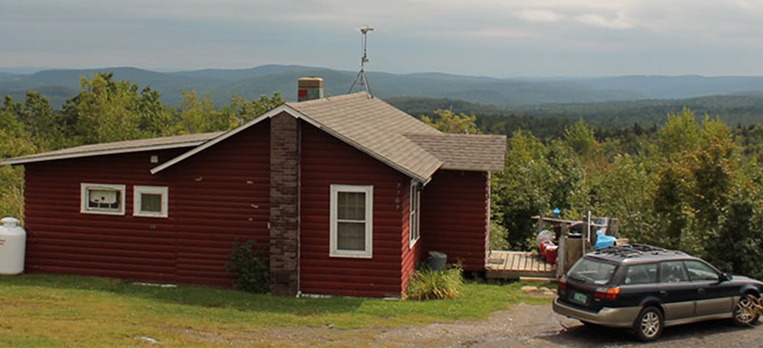
By Billy Ulmer, author of the Life in a Tiny House Ebook
Do you like looking at pictures of houses? ME TOO. But…why? When we look at pictures of other people’s homes, what exactly are we looking for? Eye candy? Design ideas? “10 Stylish Ways to Store Shoes”?
It took me years of drooling over other people’s living spaces before I realized what I was really looking for: not inspiration for my kitchen design, but inspiration for my whole life. I’m sure some people are just having good, clean fun when they browse Apartment Therapy, but I don’t think I’m the only one looking for something else beneath all the attractive surfaces in home photos. I think I finally know what I was really looking for, and how to find it. It already influenced the tiny home owners I’ve visited so far, and now it’s helping me figure out what kind of investments in my home will really pay off in terms of my happiness.
Life: Not Pictured
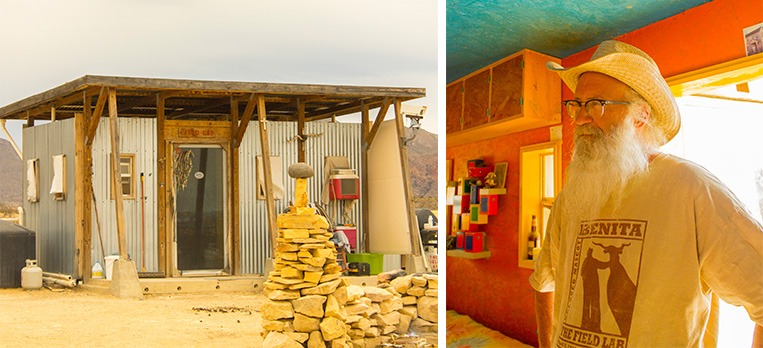
For longer than I can remember, looking at homes has been like a hobby and therapy in one: I browsed architectural magazines or design websites when I felt bored, stuck, or panicked. On some level I thought finding my “perfect home” would give me clues to my perfect life, but I usually felt jealous just as much as I felt inspired. I also felt confused. I always wanted to know who lived in the home I was looking at. Where and how did they get all that cool stuff? How can they afford that place? What do they do for a living, and do they like that? Do they really enjoy living in that apartment, home, neighborhood, city? How does their home support what’s really important to them in life? Or how does it challenge them, and how do they deal with that?
A lot of those questions were at the heart of my tiny house interviews. I had already seen a whole lot of tiny homes – the internet is chock full of them, and now there are a bunch of TV shows happy to tour you through them every night. I wanted to know about the lives that tiny houses support – how would they answer all those questions I’d been asking? So an awesome way for me to do that was to actually show up at ten of them and interview their owners about their lives, not just their houses.
It was that context of life that was missing when I hungrily clicked on home tours long into the night. Looking at photos of homes for inspiration wasn’t bad, but I was doing it badly, because I was putting a lot of emotional energy into a really incomplete set of information. I had just been lusting after pretty pictures, which kept leading me to projects and goals that didn’t make me any happier, leading to yet more agitated nights of photo envy, repeat ad nauseum.
Image and Reality

Four years ago, I lived my lifelong dream of buying a house, and then slowly realized that it didn’t make me any happier. I fell into a prolonged crisis in which I re-examined my entire life – all my goals, my job, my social scene, everything. If my biggest dream hadn’t made me happier, would any of my other dreams? Did I even know what I really wanted? How was I going to figure out what was really important to me, let alone get it?
I looked at hundreds of home “Sneak Peeks” on Design Sponge, looking for trends in what made my heart swell. I thought these pictures could be a treasure map to the life I was looking for – that the homes that spoke to me would represent that I really wanted. After all, your home is like a snapshot of your entire life. The art and maps on my walls speak to the things I love, the musical instruments and well-loved kitchen tell you how I spend my time. So, I thought, if I’m drawn to craft rooms and printmaking studios, I should be an artist or designer. And if I swoon over houses in the forest, I should get out of the city. Right?
Wrong! In my case, anyway. There was plenty to learn from what I was drawn to, but I was missing it by focusing on all the surface of the images – the cool murals, the fancy furniture, the dramatic landscapes outside. But when I examined what I loved about swoony houses and the things I already knew I loved in my life, they didn’t match.
I’ve always fantasized about houses deep in the woods or on the sandy shores of lakes, but I also know for a fact that I love walking and biking all over my little city. It’s important to me to be close to a large community of friends, opportunities for interesting work, bands I want to see live, and tasty yet affordable restaurants. The people who live in all those beautiful houses in the wilderness must love walking through the woods as much as I love walking to the grocery, and must not care much about the rest of that stuff. The reality of life in those gorgeous houses would actively prevent me from doing a number of things I love.
When I thought about all the sacrifices I would have to make to live in the wilderness cabins I was drooling over, I stopped asking, “What is my life missing, and which house contains it?” Then I started asking, “Why do I envy these houses, when I don’t envy the life you can live there?”
Find the Feeling
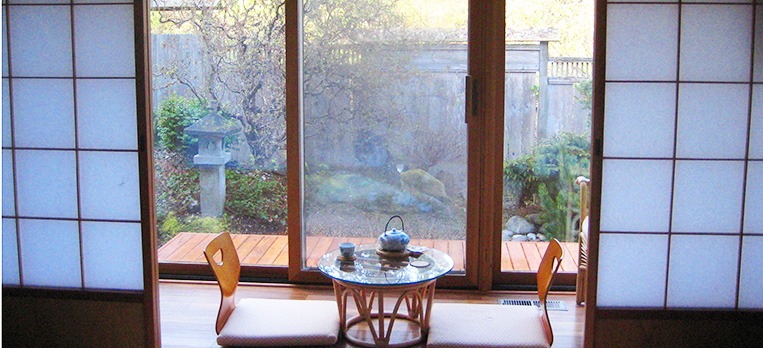
That question rang like a gentle, nagging bell in the back of my mind for years, and it was only while writing my Life in a Tiny House Ebook that I was finally able to answer it for myself. All the houses that made my heart hurt just represented feelings I wanted to feel – that’s what the images alone were good for. The Japanese homes I love speak to my need for tranquility and peace, the artistic workspaces that excite me represent my urge for creative expression, and the snowy log cabins reflect my desire to feel independent and satisfied with what I have.
The homes represent those feelings to me, and might even encourage them in a small way, but I know that buying or walking into those homes wouldn’t just give me those feelings. As I wrote about recently, you’re still you, no matter where you live. I banged my head against the wall for years thinking that in order to feel, say, peaceful, I needed to build a Japanese screen. But I tried that, and as pretty as they are, they have not yet provided me with a lasting, zen state of mind, as planned. Studying the homes that I loved was great at helping me identify how I wanted to feel, but lousy at telling me what I needed to do to feel that way. For that, you need information photos can’t provide.
Find the Functions and Philosophy
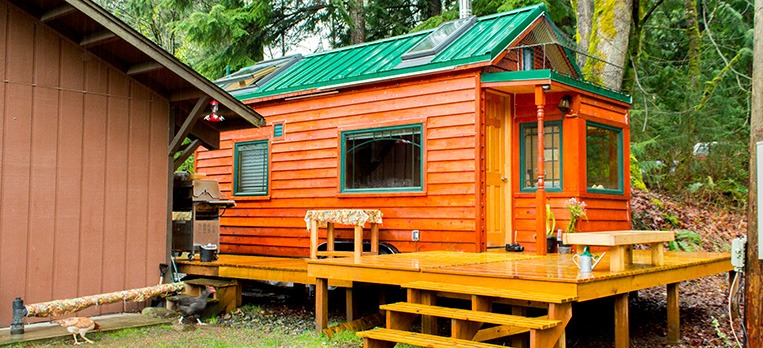
What I really wanted to accompany all the “home tours” I looked at were life tours. Who lives here? How did they come to live here? Why does it work for them? Without that information, envying or emulating their home was purely a surface exercise. Which is fine, if that’s what you want. If you need to buy a suit, looking at the ones in a magazine can help you choose. But if what you actually want is to feel successful…they don’t sell that at Macy’s.
There’s a layer underneath the persuasive look of homes that provides concretely useful information about the kind of life that it supports. Is your home immaculate and organized, or bursting at the seams with toys for your children? Is the stove a center of activity, or does the microwave see most of the action? Do you live next to a coffee shop or a cow barn? None of the answers to those questions are “right,” but some are righter for you than others. But it can be hard to know how you’d like it without more information about why it works for whoever lives there now.
Interviewing people in tiny homes was a perfect first start into this inquiry, in part because of the divisive pros and cons of tiny home life. Some people are instantly drawn to them, others instantly repelled. Opinions run the gamut:
“They’re so cute!”
“They’re too small!”
“I could finally afford my life in one!”
“I could never feel secure in one!”
They work wonderfully for some, would work terribly for others, and it all depends on a combination of practical circumstances and philosophical perspective.
Though the people I interviewed were very different from one another, their commonalities were striking: most tiny home owners I met prioritized hobbies and things to do over material goods and things to own. They don’t have room for everything they’ll ever need, but they don’t mind leaning on neighbors or their communities for what they need occasionally. They either naturally had or were able to adopt a flexible, optimistic attitude about where to park, in case they’re asked to move. Those are all great things to know that a photo spread alone cannot communicate. And again and again, people have commented or written me about how inspired they felt by the stories and insights of the people I interviewed, not just what their houses looked like.
Even if you’re not looking at houses to find yourself, like I was, something happens to us when we look at glamor shots of magazine homes. On some level we start to think we need to have the image, or at least, that we’re supposed to be able to have it. But it’s really just an image.
The problem isn’t looking at houses, it’s looking at them without the context that makes them meaningful: the lives they host. How do the style and substance interact? Which circumstances of home and philosophies of life would make it easier to create the feelings I want to feel?
Look at Life, Not Just at Home
When I began, I thought that interviewing ten tiny home owners would be enough on that subject, and that I’d then move on to interview people who’ve made other unlikely choices. Choices related to home, but also to work, personal habits, education, and so on. But the thing is – I still want to know where all those people live. It matters. It has a real effect on our lives, but in subtler ways than we usually discuss – I’m leery of the idea that installing built-in shelves is going to improve our lives in a drastic fashion.
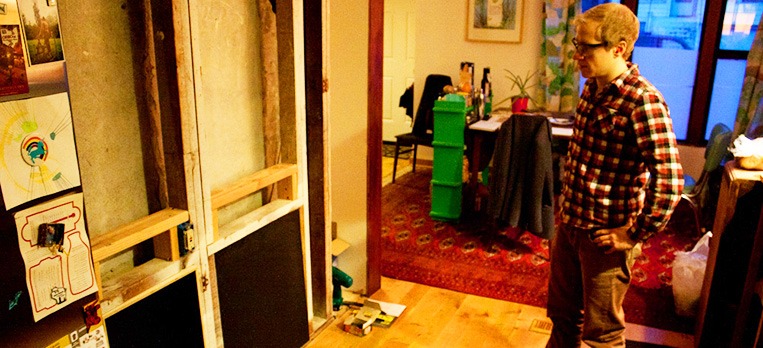
It took me way too long to realize that my “dream home” wasn’t necessarily going to help me live my dream life. I want the other home browsers of the world to know that some of the dreamiest lives out there may not begin each morning with a clawfoot tub or his and hers sinks.
If you, like me, find yourself drooling over some dreamy home scene or feature that makes you feel like you should quit the life you’ve built so far and go build that one instead, ask yourself some hard questions about why you’re drawn to what makes you pine. Take note of the people who created the lives they wanted and found the feelings they were looking for, against the odds and off the beaten path. Examine home in its real context – the context of life – and it may help you find both the life and home that will actually make your days a little brighter.

Comments are closed.